This document summarizes key concepts about sound from a physics textbook chapter:
1) It provides formulas and sample calculations for determining the speed of sound in various materials like steel, copper, and air using properties like density, temperature, and molecular mass.
2) It also discusses the fundamental frequencies and overtones of vibrating air columns in open and closed pipes of different lengths, using the speed of sound and formulas involving wavelength and frequency.
3) The final sections cover sound intensity and decibel calculations, defining the reference intensity and showing examples of computing intensity from a given decibel level or vice versa.
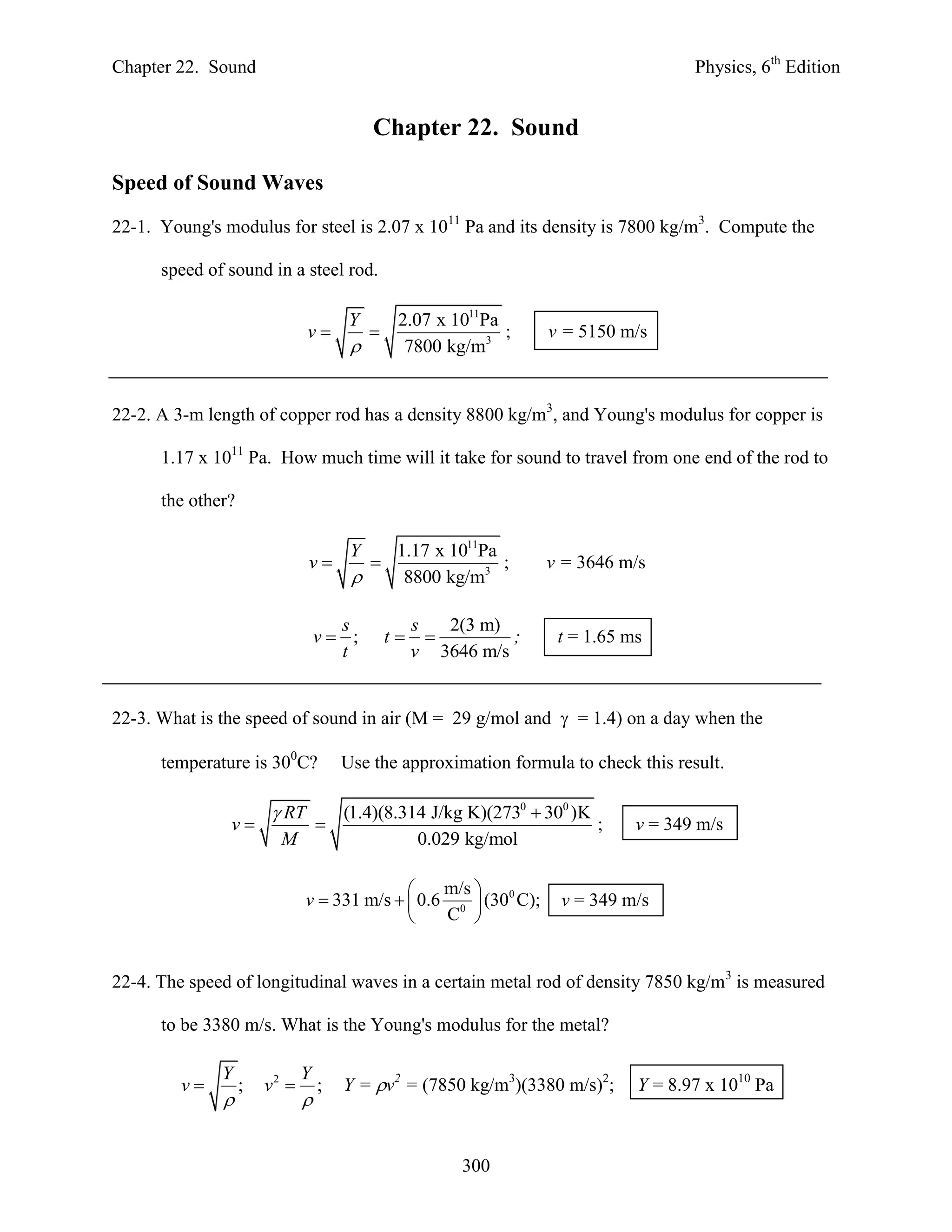
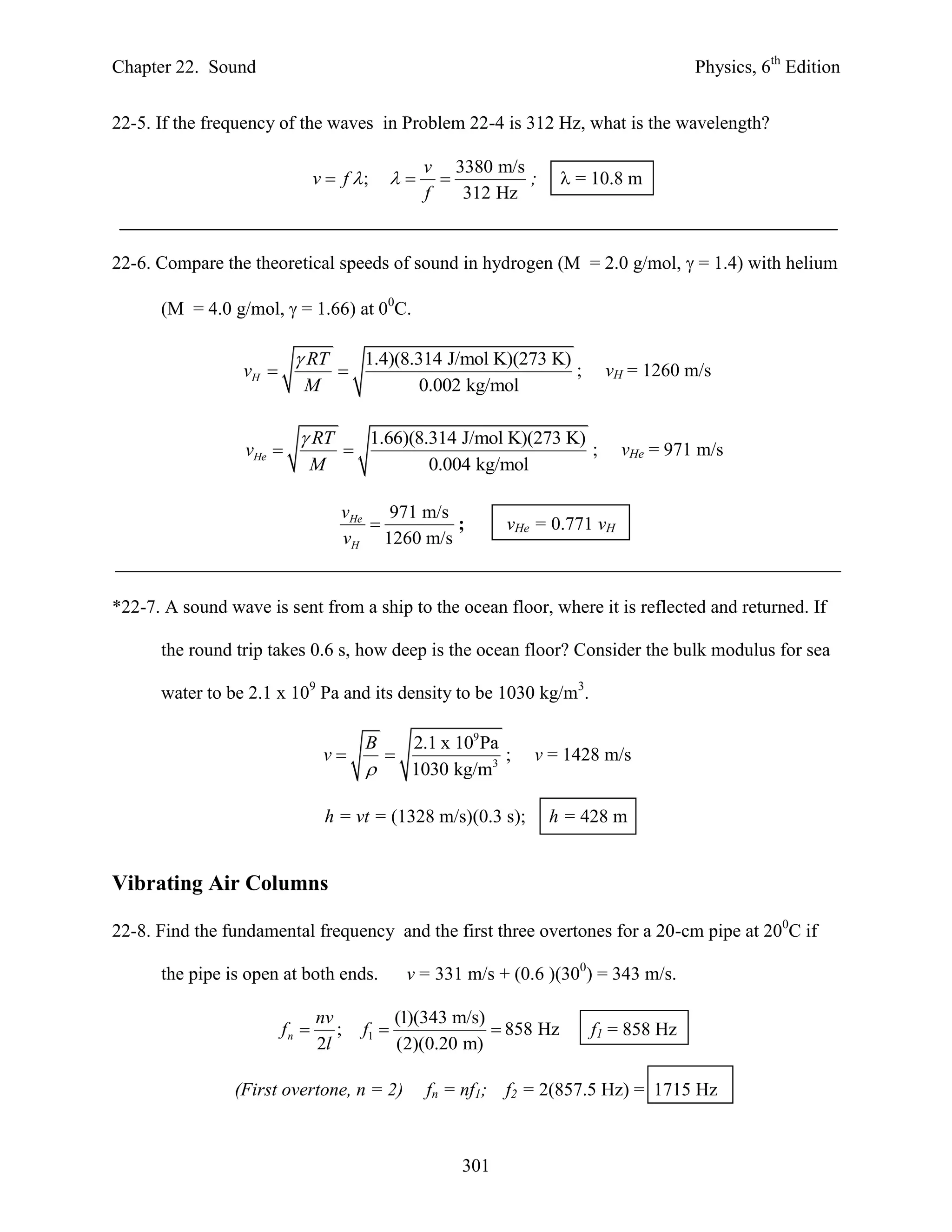
![Chapter 22. Sound Physics, 6th Edition
22-8 (Cont.) (2nd overtone, n = 3) fn = nf1; f2 = 3(857.5 Hz) = 2573 Hz
(3rd overtone, n = 4) fn = nf1; f2 = 4(857.5 Hz) = 3430 Hz
22-9. Find the fundamental frequency and the first three overtones for a 20-cm pipe at 200C if the
pipe is closed at one end.
nv (1)(343 m/s)
fn ; f1 429 Hz f1 = 429 Hz
4l (4)(0.20 m)
(First overtone, n = 3) fn = nf1; f2 = 3(429 Hz) = 1290 Hz
(2nd overtone, n = 5) fn = nf1; f2 = 5(429 Hz) = 2140 Hz
(3rd overtone, n = 7) fn = nf1; f2 = 7(429 Hz) = 3000 Hz
22-10. What length of closed pipe will produce a fundamental frequency of 256 Hz at 200C?
nv (1)(343 m/s)
fn ; l ; l = 0.335 m; l = 33.5 cm
4l 4(256 Hz)
22-11. What length of open pipe will produce a fundamental frequency of 356 Hz at 200C?
nv (1)(343 m/s)
fn ; l ; l = 0.482 m; l = 48.2 cm
2l 2(356 Hz)
22-12 What length of open pipe will produce a frequency of 1200 Hz as it first overtone on a
day when the speed of sound is 340 m/s? [ For open pipe, first overtone is for n = 2 ]
nv 2(340 m/s)
fn ; l ; l = 28.3 cm
2l 2(1200 Hz)
22-13. The second overtone of a closed pipe is 1200 Hz at 200C. What is the length of the pipe.
The second overtone for a closed pipe occurs when n = 5, and v = 343 m/s.
nv 5(343 m/s)
fn ; l ; l = 35.7 cm
4l 4(1200 Hz)
302](https://image.slidesharecdn.com/anschp22-100927184152-phpapp01/75/Anschp22-3-2048.jpg)
![Chapter 22. Sound Physics, 6th Edition
*22-14. In a resonance experiment, the air in a closed tube of variable length is found to resonate
with a tuning fork when the air column is first 6 cm and then 18 cm long. What is the
frequency of the tuning fork if the temperature is 200C? [ v = 343 m/s at 200C. ]
The distance between adjacent nodes of resonance is one-half of a wavelength.
v 343 m/s
18 cm - 6 cm; 24 cm; f ; f = 1430 Hz
2 0.24 m
*22-15. A closed pipe and an open pipe are each 3 m long. Compare the wavelength of the fourth
overtone for each pipe at 200C. ? (Only odd harmonics allowed for closed pipe.)
For an open pipe, the fourth overtone is the fifth harmonic, n = 5.
2l 2(3 m)
Open (fourth overtone): n ; 5 ; 5 = 1.20 m
n 5
For closed pipe, the fourth overtone is the ninth harmonic, n = 9.
4l 4(3 m)
Closed (fourth overtone): n ; 9 ; 9 = 1.33 m
n 9
Sound Intensity and Intensity Level
22-16. What is the intensity level in decibels of a sound whose intensity is 4 x 10-5 W/m2?
I 4 x 10-5 W/m2
10log 10log ; = 76.0 dB
I0 1 x 10-12 W/m2
22-17. The intensity of a sound is 6 x 10-8 W/m2. What is the intensity level?
I 6 x 10-8 W/m2
10log 10log ; = 47.8 dB
I0 1 x 10-12 W/m2
303](https://image.slidesharecdn.com/anschp22-100927184152-phpapp01/75/Anschp22-4-2048.jpg)
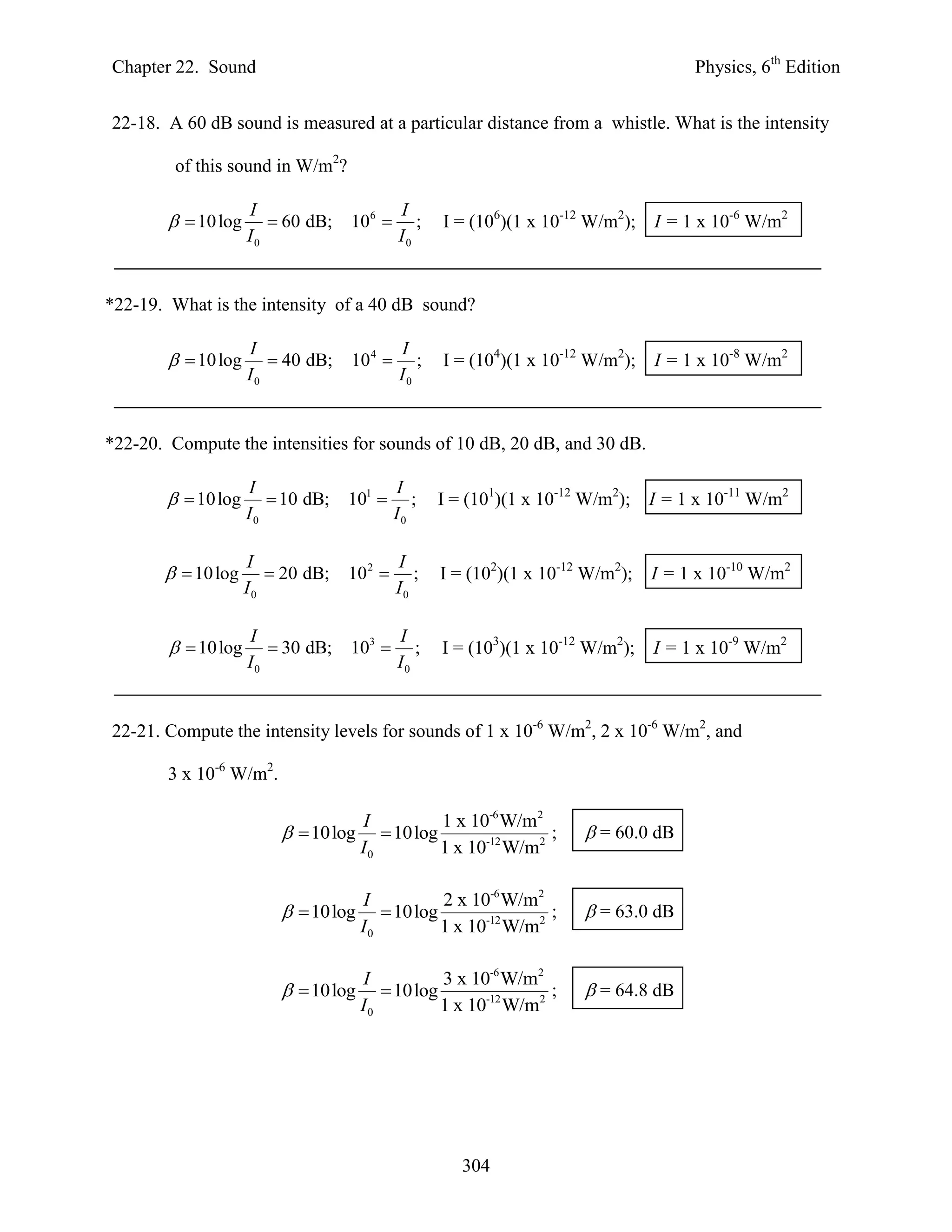

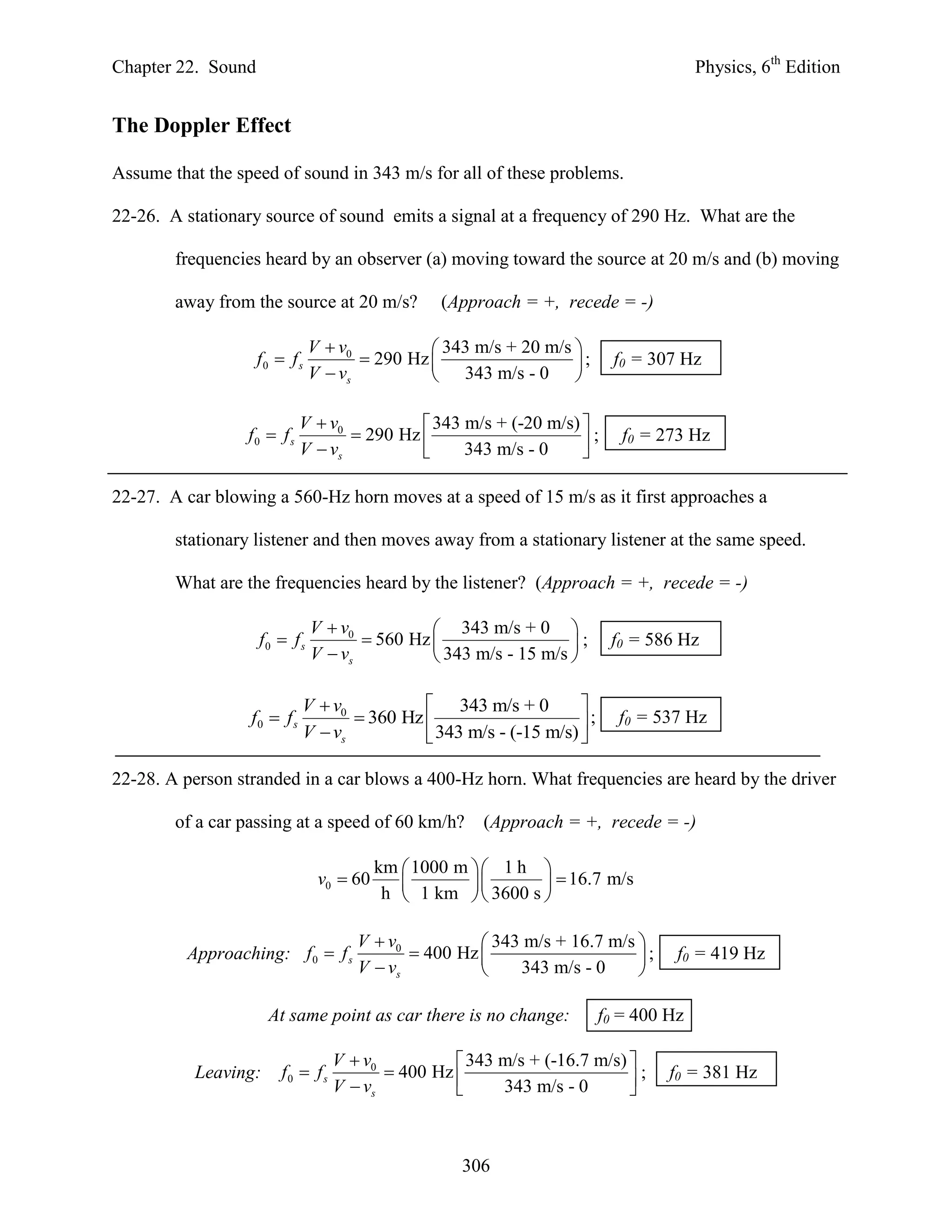
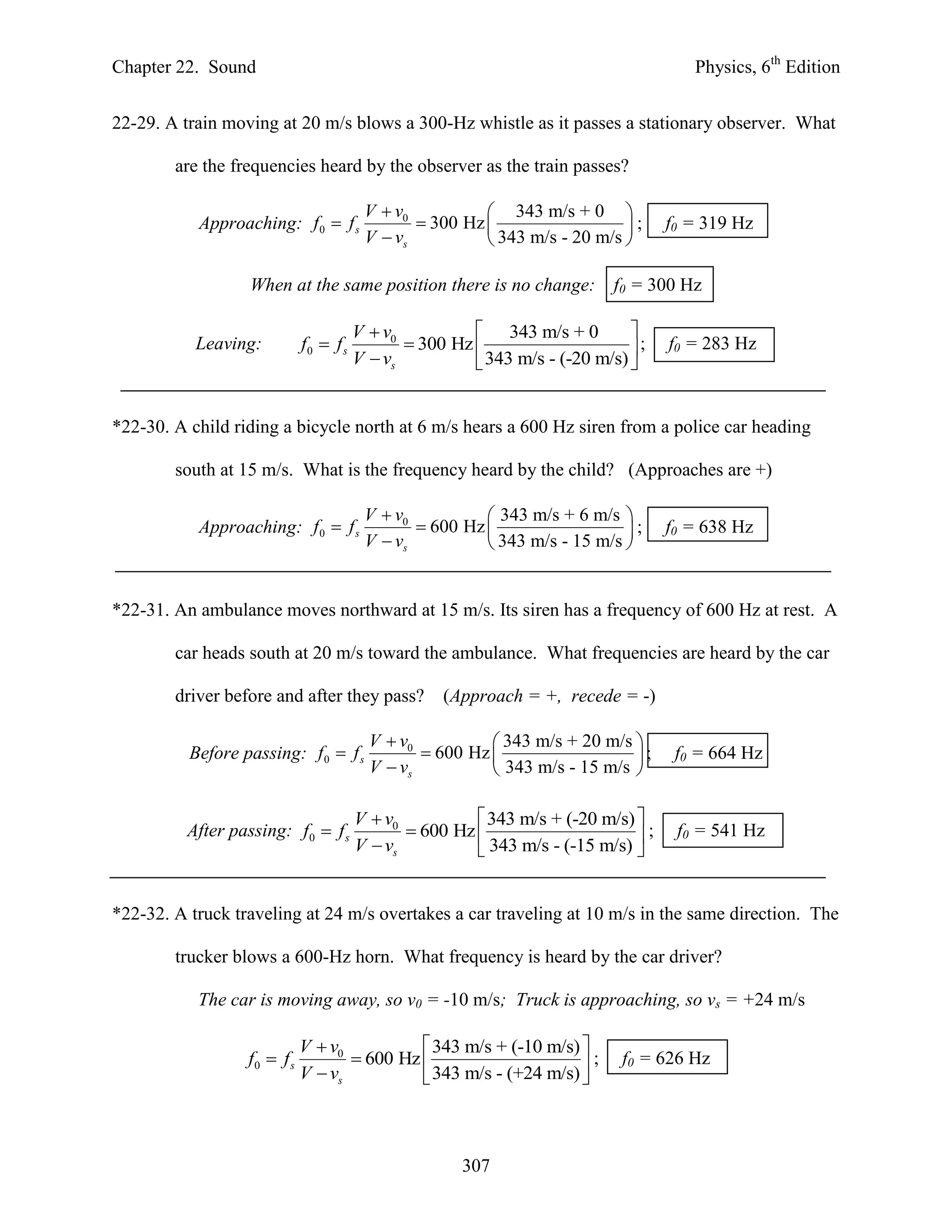
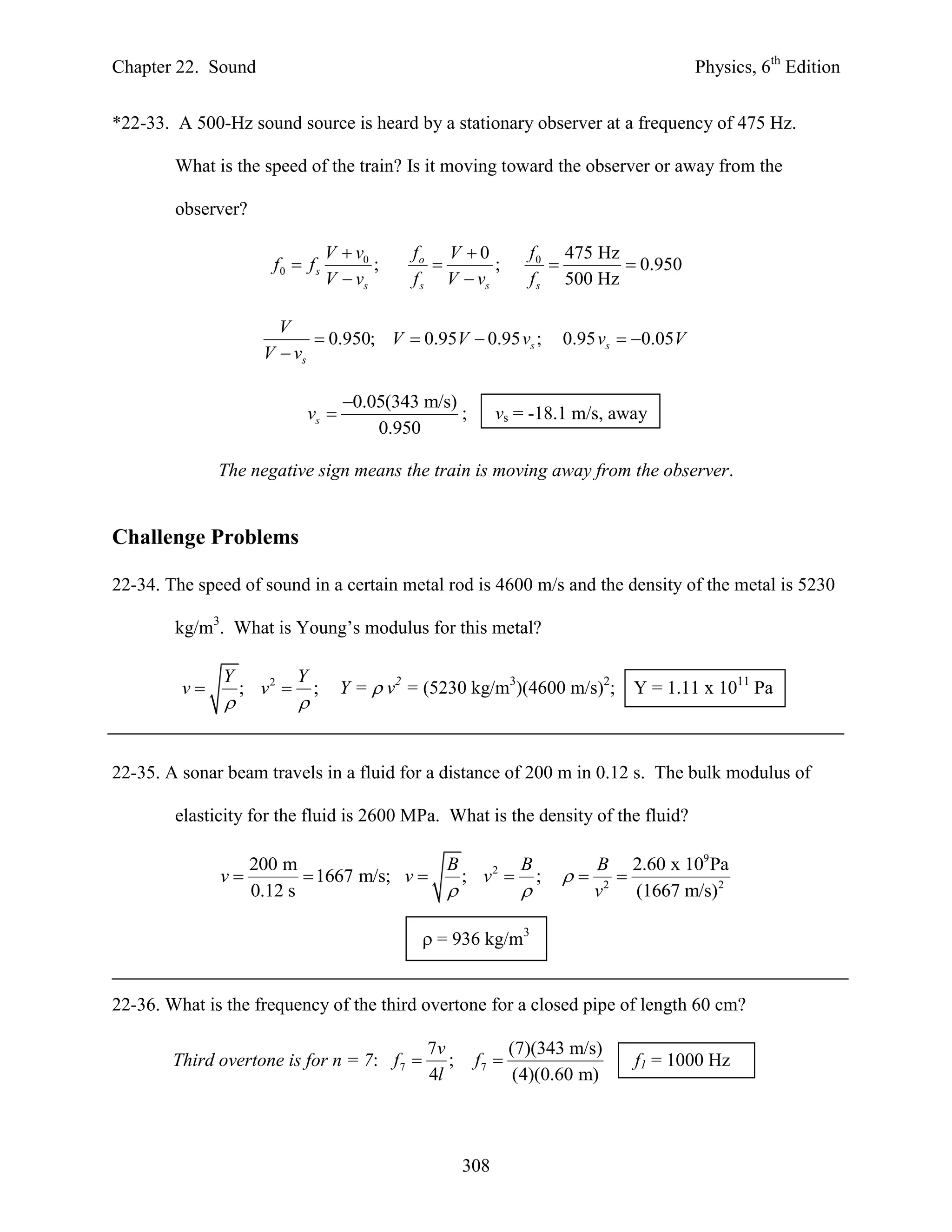
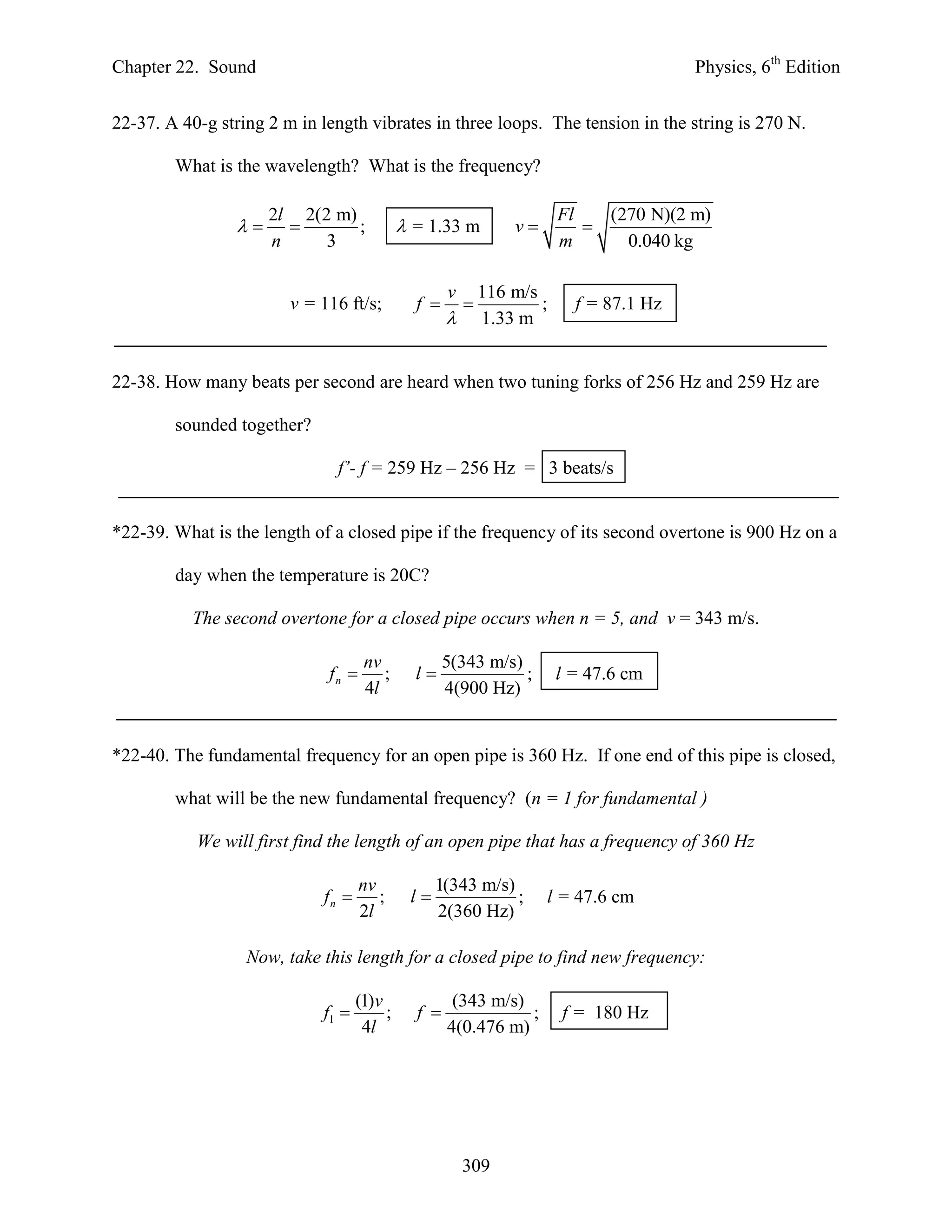
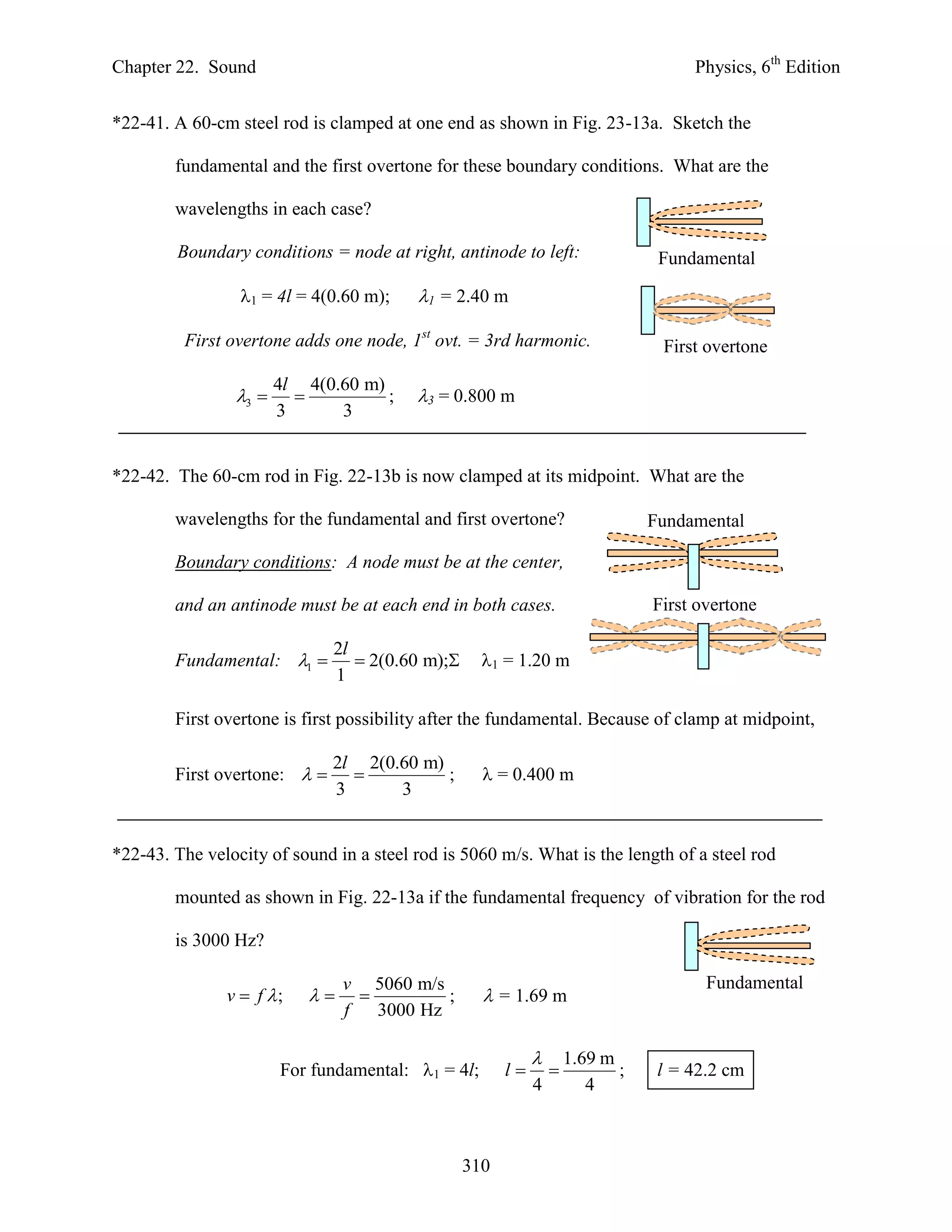

![Chapter 22. Sound Physics, 6th Edition
*22-47. What is the difference in intensity levels (dB) for two sounds whose intensities are
2 x 10-5 W/m2 and 0.90 W/m2? [ See solution for Prob. 22-44 above. ]
I2 I I2
2 1 10 log 10 log 2 ; 2 1 10 log
I0 I0 I1
0.90 W/m 2
2 1 10 log ; = 46.5 dB
2 x 10-5 W/m 2
Critical Thinking Questions
*22-48. By inhaling helium gas, one can raise the frequency of the voice considerably. For air
M = 29 g/mol and = 1.4; for helium M = 4.0 g/mol and = 1.66. At a temperature of
270C, you sing a “C” note at 256 Hz. What is the frequency that will be heard if you
inhale helium gas and other parameters are unchanged? Notice that both v and f were
increased. How do you explain this in view of the fact that v = f. Discuss.
RT 1.4)(8.314 J/mol K)(300 K)
vair ; vH = 347 m/s
M 0.029 kg/mol
RT 1.66)(8.314 J/mol K)(300 K)
vHe ; vHe = 1017 m/s
M 0.004 kg/mol
The fundamental wavelength is a property of the boundary conditions which don’t
change. Therefore, the frequencies are directly proportional to the velocities.
f He 1017 m/s
2.93; fHe = 2.93 fair = 2.93(256 Hz); fHe = 750 Hz
f air 347 m/s
The ratio of v/f is constant and equal to the wavelength in each case.
312](https://image.slidesharecdn.com/anschp22-100927184152-phpapp01/75/Anschp22-13-2048.jpg)


